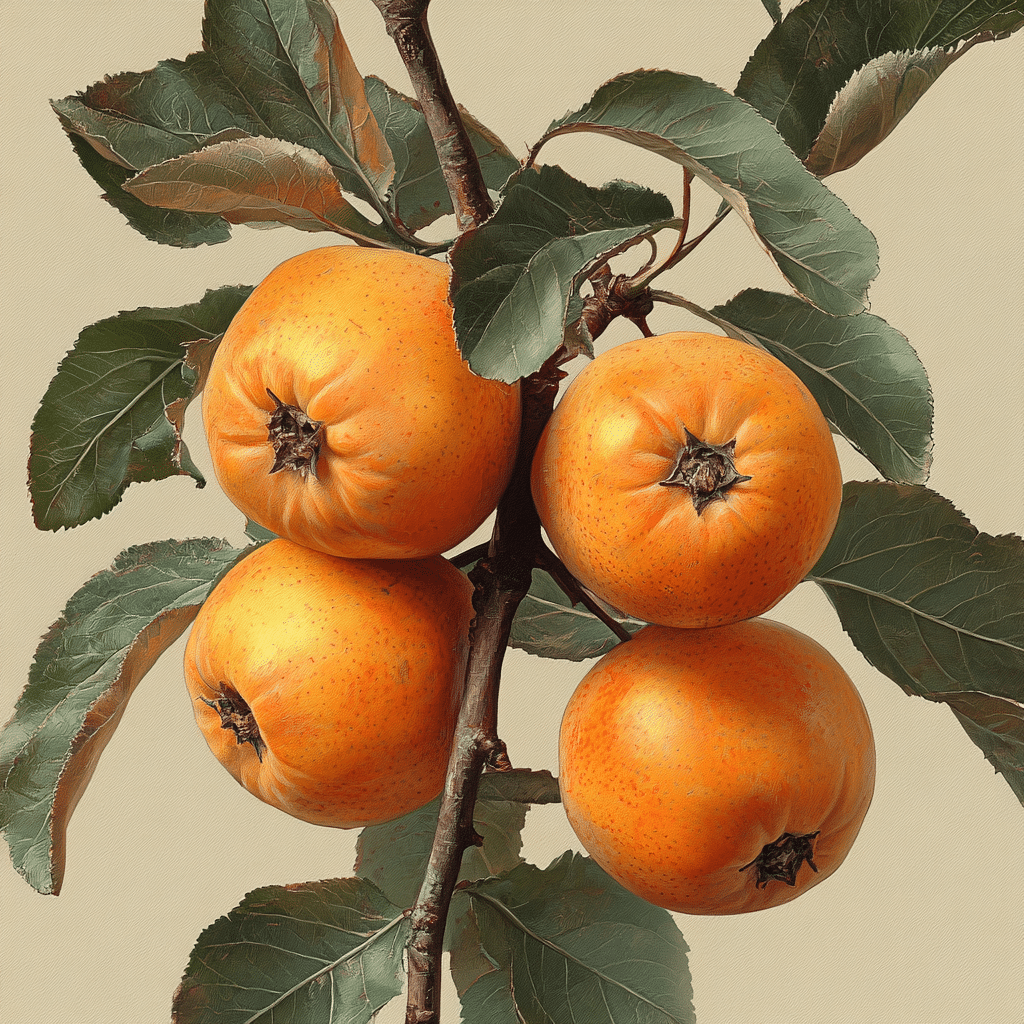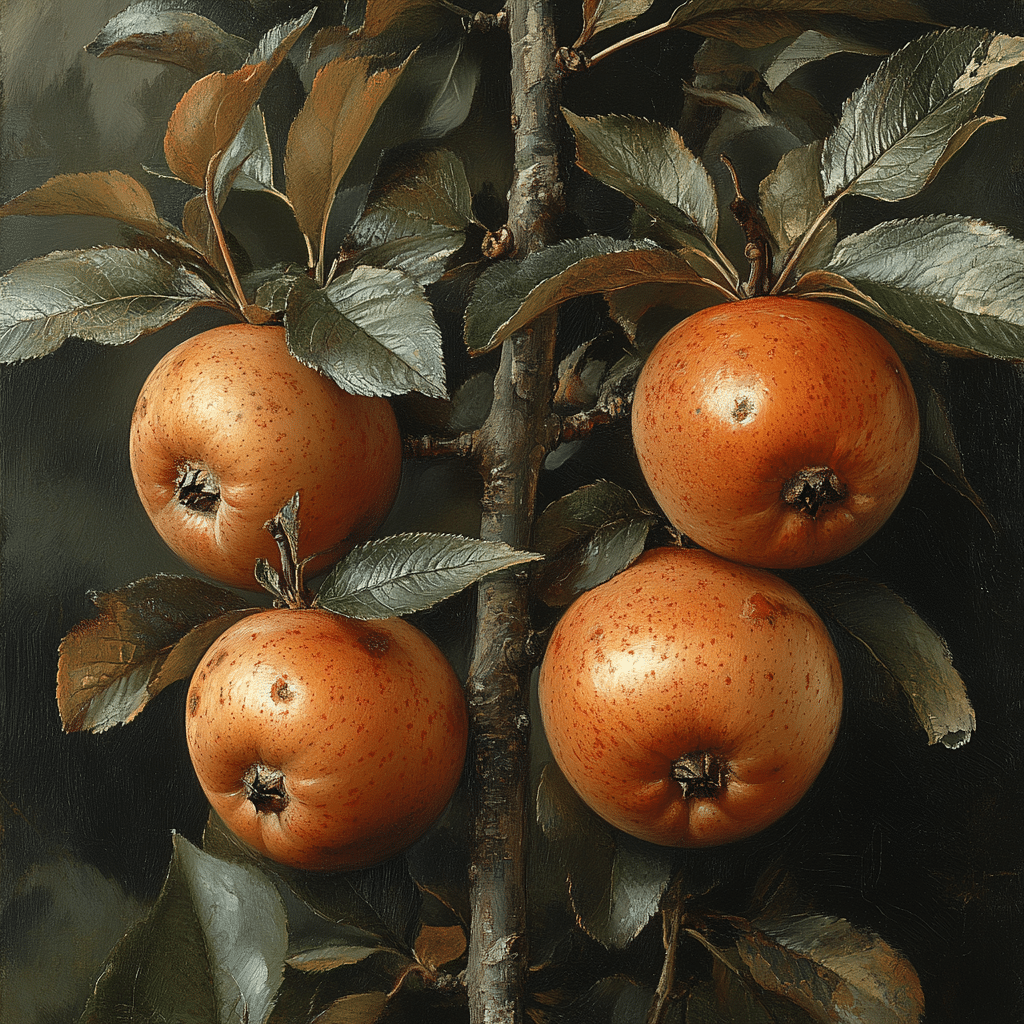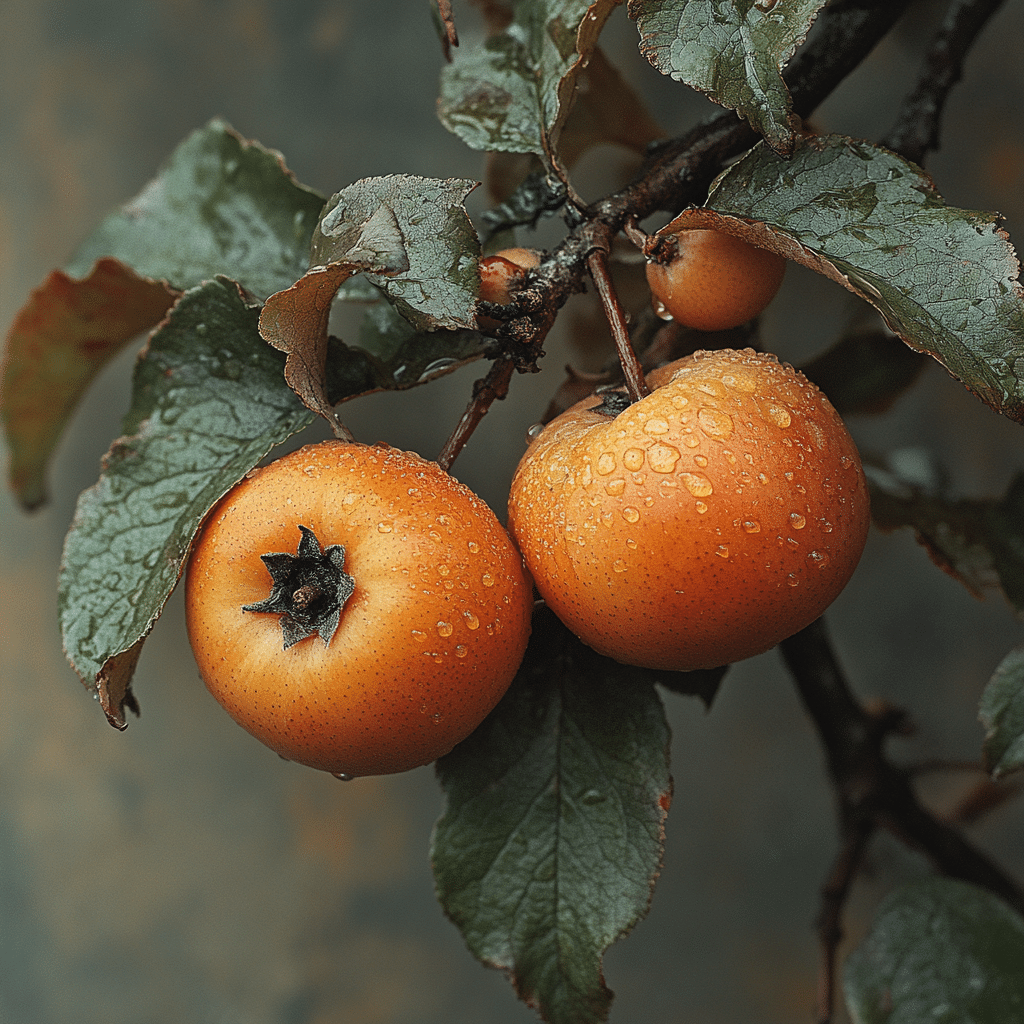What is Medlar Fruit?
Medlar fruit, often overlooked in contemporary cuisines, boasts a rich history and unique culinary characteristics. With roots tracing back to ancient Greece and Rome, medlars were once a staple in European diets. This curious fruit, botanically classified as Mespilus germanica, is related to apples and pears but distinguishes itself with its peculiar ripening process.
Medlars are typically harvested when they are hard and astringent, making them nearly inedible. However, the true charm of medlar fruit unfolds when they are left to undergo a natural fermentation process known as bletting. Bletting causes the fruit’s flesh to soften and its flavor to sweeten, transforming it into a prized delicacy.
The Bizarre Botany of Medlars
Medlars might baffle those unfamiliar with their natural progression. When freshly picked, these fruits are unappetizing in appearance and taste, characterized by their hard texture and sourness. They must be stored in a cool, dark place for several weeks, allowing enzymes to break down the fruit’s tannins and acids. Once bletted, medlars resemble large, brown roses and bear a taste reminiscent of spiced applesauce with hints of caramel.
Comparing the medlar fruit’s journey from unripe to overripe to wines, the fermentation process similarly amplifies flavors and sweetness. Imagine a freshly bottled Cabernet Sauvignon that, after proper aging, reveals its full-bodied complexity. This transformation showcases the wonder of natural, patient food processing techniques often lost in today’s age of instant gratification.

| Aspect | Details |
| Scientific Name | Mespilus germanica |
| Common Name(s) | Medlar |
| Historical Name | “Open-arse” (historically so named for its calyx resemblance) |
| Appearance | Brownish, looks spoiled when ripe, large calyx |
| Taste Description | Apple puree with undertones of citrus, date, and apricot |
| Consuming Method | – Raw: Squidge and eat innards or peel and eat |
| – Processed: Juice, beverages, sauces, jelly, cheese, jams, leather, syrup | |
| Growing Regions | – Missouri, USA |
| – Southern regions of the United States | |
| Planting Instructions | – Full sun exposure |
| – Adaptable to many soil types | |
| – Graft union should be two inches above soil surface | |
| Tree Characteristics | – Best in full sun |
| – Grows well in various soils | |
| Availability | Rarely found in supermarkets when ripe due to appearance |
| Harvest Season | Late autumn typically |
| Processing Products | – Juice, beverages, sauces |
| – Jelly, cheese, jams | |
| – Fruit leather, syrup | |
| Nutritional Benefits | – Rich in antioxidants, fibers |
| – Contains vitamins and minerals | |
| Cultural Context | Once prevalent in European diets, now considered exotic and underappreciated |
Medlars in Modern Cuisine: Recipes and Applications
For those adventurous enough to incorporate medlar fruit into their culinary repertoire, several contemporary chefs and home cooks have begun to reintroduce this historical fruit in innovative ways. Celebrity chef Jamie Oliver, renowned for his revival of traditional British dishes, has featured medlar preserves and medlar-infused sauces in his latest cookbook, marrying ancient ingredients with modern palates.
Medlar Jam
One particularly popular use is in making medlar jam, praised for its deep, rich flavor. After bletting, the soft medlar pulp is cooked with sugar, lemon juice, and spices such as cinnamon or clove. The resulting concoction pairs beautifully with cheeses or serves as a sophisticated spread for breakfast toasts.
Medlar Liqueur
Another contemporary application includes medlar liqueur. Boutique distillery Warner’s, known for crafting artisanal spirits, recently launched a medlar-based gin. This innovative product combines traditional botanicals with the honeyed notes of overripe medlar, creating a distinct, aromatic beverage gaining popularity among mixologists.
The Nutritional and Medicinal Benefits of Medlars
Beyond their culinary charm, medlar fruit holds notable nutritional and medicinal benefits. Historical records indicate that medlars were used in medieval medicine to treat various ailments. Modern studies have validated some of these traditional uses, uncovering components beneficial to health.
Rich in Antioxidants: Medlar fruits are loaded with antioxidants, vital for combating oxidative stress and reducing inflammation. This quality makes medlars an excellent addition for those focused on maintaining general health and wellness.
Digestive Aid: The high fiber content in medlars promotes healthy digestion. Historically, they were used as a remedy for digestive complaints, serving as a gentle laxative.
Vitamin C Source: Medlar fruit is a notable source of Vitamin C, crucial for immune function, skin health, and iron absorption. Given the global focus on boosting immunity, especially post-pandemic, incorporating naturally Vitamin C-rich foods like medlars can be advantageous.

Preserving Tradition in a Modern World
The resurgence of medlar fruit in today’s culinary landscape highlights a broader trend towards valuing traditional knowledge and heritage foods. With climate change affecting modern agricultural practices, resilient crops like medlars—well-suited to temperate climates and requiring minimal intervention—offer sustainable alternatives for future food security.
Culinary historian Dr. Annie Gray emphasizes the cultural importance of rediscovering and preserving such ancient fruits. Dr. Gray’s recent lecture series on “Forgotten Fruits and Their Legacies” underscores the importance of not just the flavors but also the stories behind them. She argues that fruits like medlars connect us to our past and remind us of the cyclical nature of culinary trends.
Rediscovering the Medlar’s Magic
The medlar fruit’s transformative journey from an inedible, astringent orb to a sumptuous, overripe delight encapsulates nature’s forgotten wonders. As we embrace more sustainable and diverse food sources, the medlar offers not just ancient flavors but also lessons in patience, tradition, and the beauty of imperfection.
So the next time you stumble upon This unusual fruit in your local farmer’s market, remember: what may initially appear unpalatable could, with time and understanding, reveal a surprisingly delicious secret. By reintroducing medlars to our diets, we preserve a piece of history and explore the full spectrum of natural flavors our ancestors once cherished.
Embrace the delicious surprise that medlar fruit offers and discover what many culinary enthusiasts already know—great things come to those who wait.
Medlar Fruit: Delicious When Overripe
Quirky Facts About Medlar Fruit
Medlar fruit is a fascinating subject with a quirky survival trick up its sleeve – it’s best enjoyed when it looks overripe. In fact, this unique fruit has caught the fancy of many who appreciate the strange and marvelous in nature. Speaking of marvels, did you know the delightful process of bletting gives medlar its characteristic flavor? Bletting, in case you were wondering, is when the fruit softens and turns brown, almost as if it’s gone past its prime – but that’s when it’s perfect to eat!
Little-known fruit trivia can be quite the conversation starter. For instance, the medlar has been around since Roman times and was once more popular than apples. Despite its ancient roots, this odd fruit fell out of favor for ages before making a comeback in culinary circles today. In parallel, cultural items, like the whimsical Shirley Gooding cartoon, have garnered nostalgia for past eras, much like the medlar does for ancient fruit lovers.
Interestingly enough, medlar fruit was used medicinally in the Middle Ages, believed to aid digestion and treat ailments. Similarly, much like the evolving nature of Sichuan peppercorn in diverse dishes, the medlar is rediscovered and repurposed in modern cuisine today. From jams to liqueurs and even baked goods, medlar’s versatility makes it a hidden gem in the culinary world.
Here’s something you might not know: the phrase time Is god applies wonderfully to medlar fruit because patience in its ripening process transforms it from harsh and inedible to a delectable treat. It’s akin to how long-term investments, illustrated in the housing interest rates chart, mature over time. So next time you come across the medlar, remember its ancient heritage and the wonders of time as you savor its complex flavors.

What does a medlar fruit taste like?
Medlar fruit tastes like apple puree with a hint of citrus, date, and apricot. It’s a unique blend that’s surprisingly delicious.
Do medlars grow in the US?
Yes, medlars can be grown in Missouri and the southern parts of the United States. They thrive in full sun and are adaptable to various soil types.
Is there another name for medlar fruit?
The medlar fruit used to be called “open-arse” for about 900 years, likely due to the appearance of its large calyx or bottom.
How do you blet medlar fruit?
To blet medlar fruit, simply leave them out in a cool place for a couple of weeks until they become soft and brown, looking almost like they’re spoiled.
Is medlar the same as loquat?
No, medlar is not the same as loquat. Though they might look similar, they are different fruits with distinct flavors and uses.
Is medlar a goji berry?
No, medlar is not a goji berry. They are completely different fruits with different appearances, tastes, and uses.
What are the pests in medlar?
Medlar trees can be susceptible to pests like fire blight, aphids, and caterpillars. Regular care and monitoring can help manage these issues.
Is medlar the same as Quince?
No, medlar is not the same as quince. While both are old-fashioned fruits, they differ in taste, texture, and culinary usage.
What is a medlar person like?
If you’re talking about someone who likes medlar fruit, they might be adventurous and open to trying unique foods that others might overlook.
Do deer eat medlar?
Yes, deer do eat medlar. They can find the fruit quite appealing, so if you’re growing medlars, you might want to protect your trees.
What does medlar smell like?
Medlar has a subtle smell that can range from sweet and mildly fruity to slightly overripe when it’s bletted.
Can dogs eat medlar fruit?
It’s best to avoid giving medlar fruit to dogs. Some fruits can be harmful, and it’s better to be safe and stick to dog-friendly foods.
What is the taste of medlar?
Medlar in English is simply “medlar.” It’s an old fruit that has kept its name over the centuries.
What is medlar in English?
A medlar tree looks like a small to medium-sized tree with spreading branches. It has dark green, slightly serrated leaves and produces pretty white blossoms.



